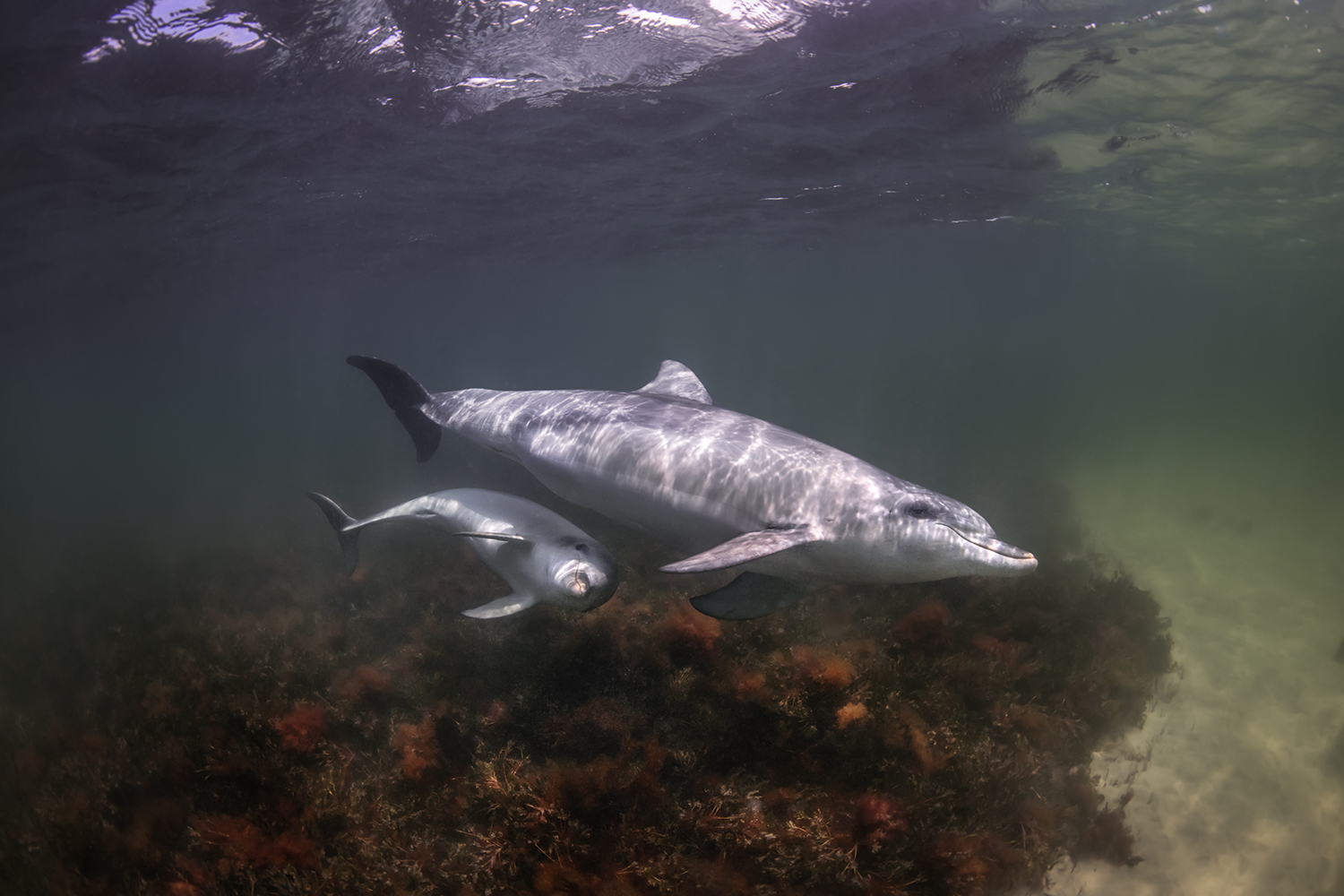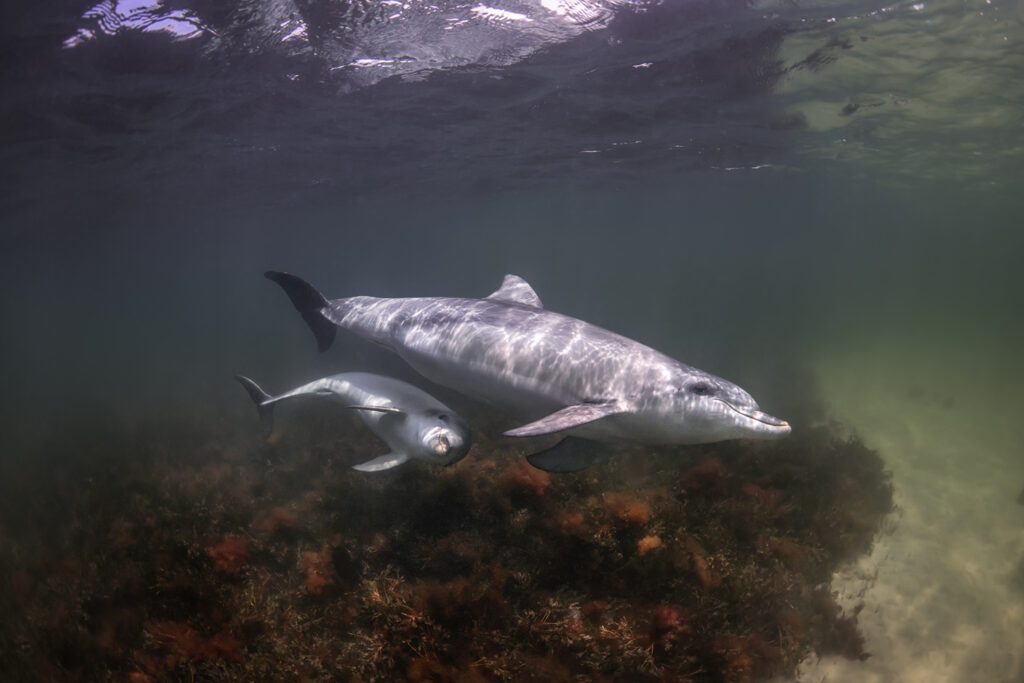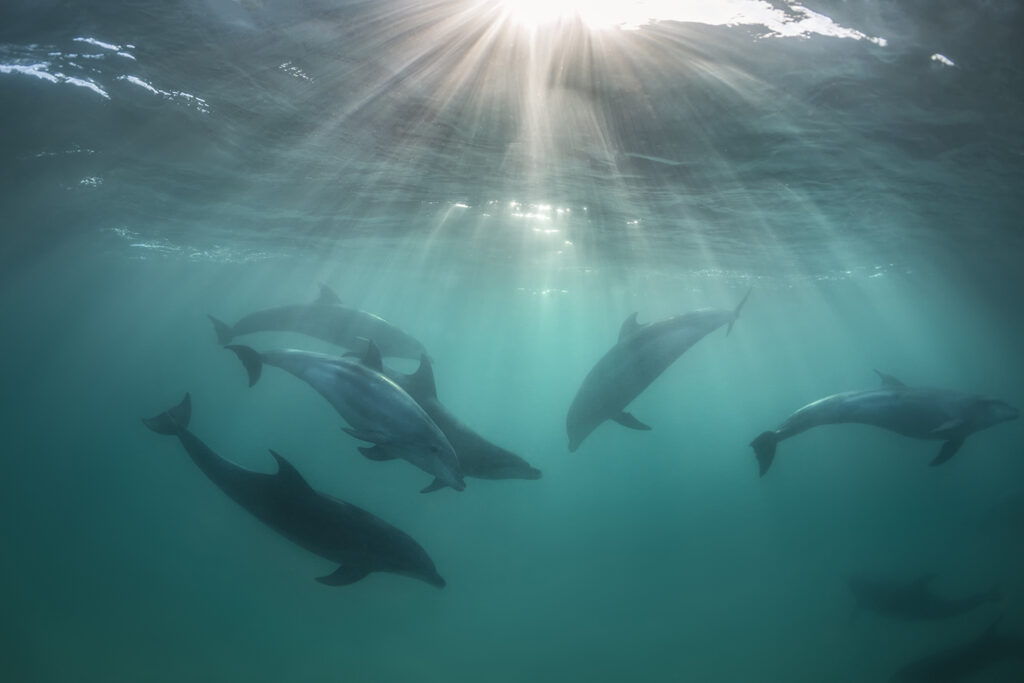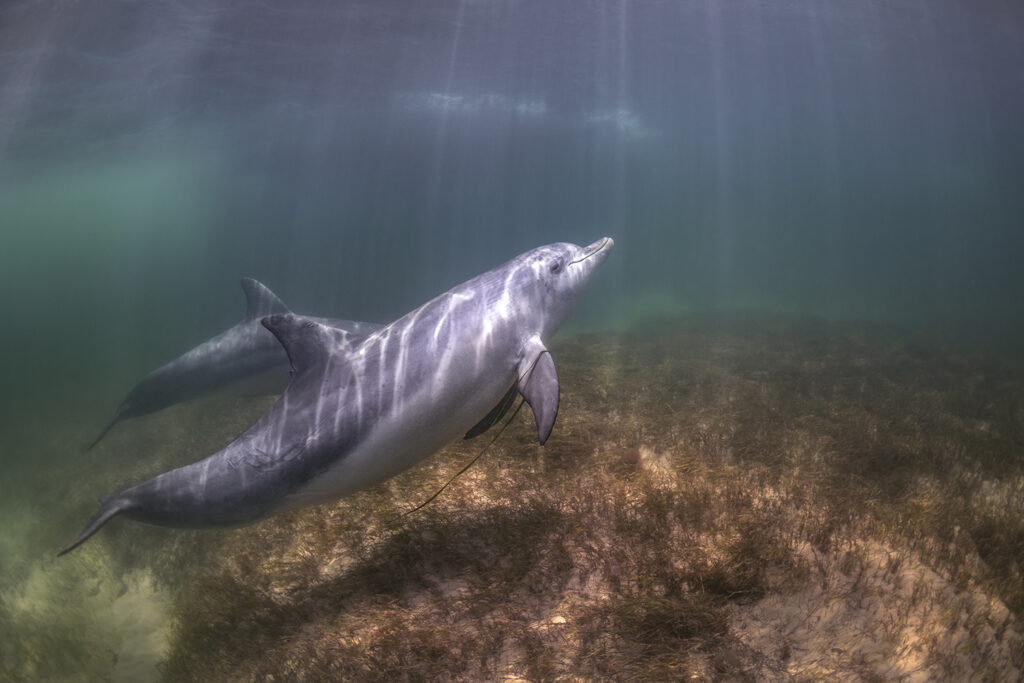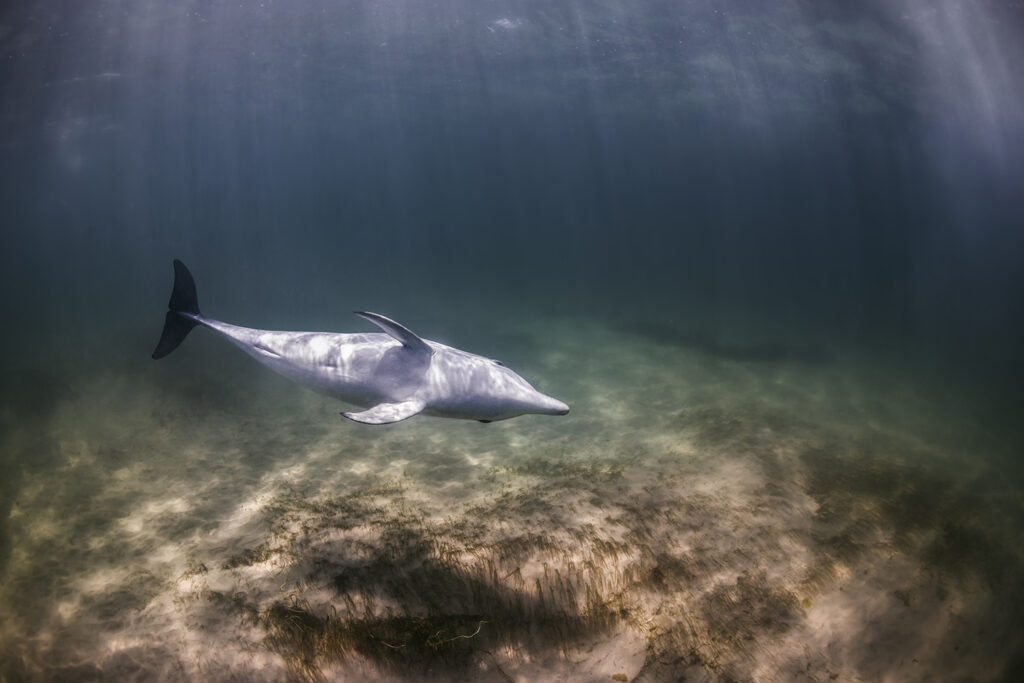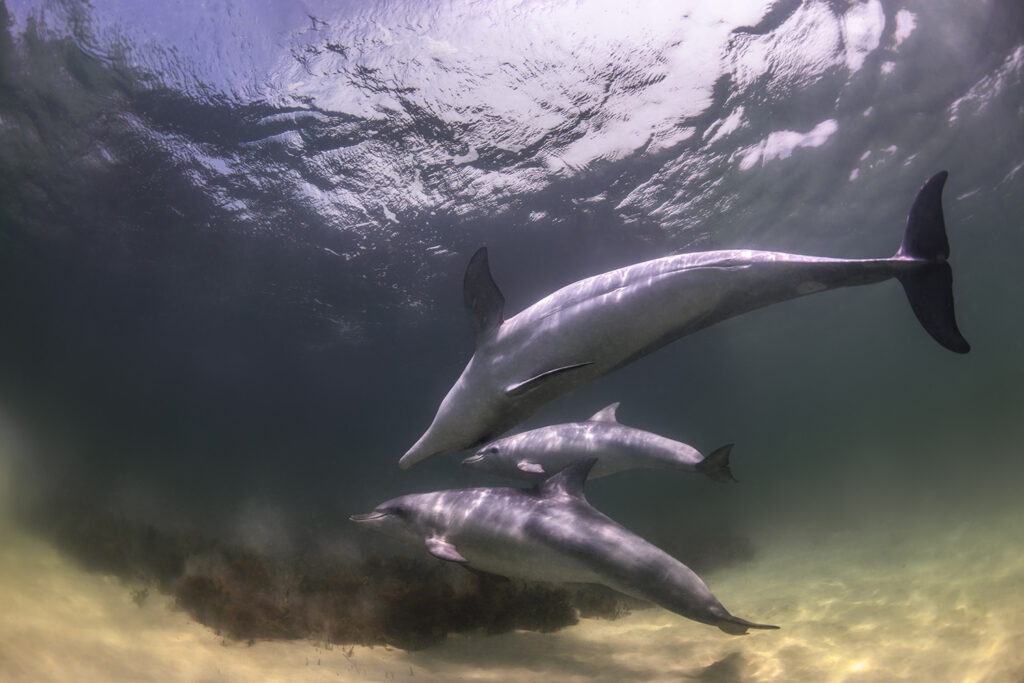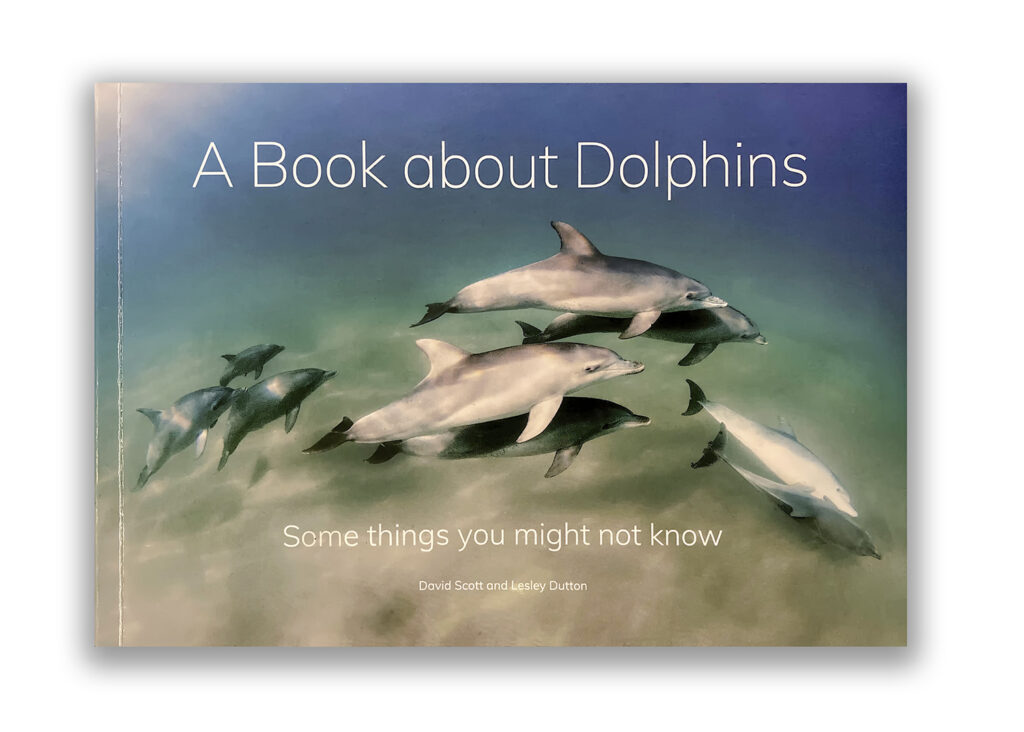Dolphins: Masters of Sound and Play
Dolphins are remarkable communicators, capable of producing a wide range of sounds using specialised nasal air sacs just below their blowholes. These sounds fall into three main categories: whistles, burst-pulsed sounds, and echolocation clicks. Whistles are used for social interaction and are made by vibrating tissue in a way that’s somewhat similar to how human vocal cords work. Burst-pulsed sounds are more complex and not yet fully understood, but are also part of their communication system.
Clicks, on the other hand, serve a different purpose. They’re used for echolocation – allowing dolphins to “see” with sound. These clicks are incredibly loud and focused, helping dolphins identify objects, other animals, and even humans underwater. When a dolphin approaches something interesting, the click rate increases rapidly, forming what’s called a “click train.”
A Name of Their Own
One of the most fascinating aspects of dolphin communication is the use of signature whistles. Bottlenose dolphins develop their own unique whistle—a kind of personal name. These signature whistles allow them to recognise and call out to each other, even across great distances. Even more incredible, dolphins have been known to remember another individual’s signature whistle more than twenty years later.
The Joy of Play
Play is a big part of a dolphin’s life. They engage in playful behaviour with objects, bubble rings, other dolphins, and even other species. You might see them tossing a piece of seaweed, passing it between one another, or blowing intricate bubble rings for fun. In some cases, dolphins have been seen interacting with birds or even dogs near the shore. Their playful curiosity is endless – and sometimes unpredictable.
Copycats with Character
Dolphins are also capable of imitation, especially in captivity. One well-known story comes from a calf named Dolly, who observed a man exhaling cigarette smoke through a glass viewing panel. She swam to her mother, suckled milk, then returned and released it in a cloudy puff around her head – mimicking what she had just seen.
A Strange Game with Blowfish
Young dolphins in Western Australia have been observed gently passing around blowfish. Some researchers believe this may be a form of play, while others suggest they’re intentionally exposing themselves to tiny amounts of the blowfish’s neurotoxin, possibly inducing a trance-like state. Whether it’s for fun or sensation, the behaviour highlights their complex and curious minds.
Sleeping with One Eye Open
Unlike humans, dolphins don’t sleep with their whole brain at once. Instead, they rest one half of the brain at a time, keeping the other half alert to breathe and stay aware of their surroundings. When you see a dolphin swimming slowly with one eye closed, it’s likely sleeping. Mothers are especially attentive – always keeping an eye open that faces their calf. Even more fascinating, the waking side of the brain knows what happened while the other side was asleep.
The Indus River dolphin, which lives in strong, debris-filled currents, has adapted a unique sleep pattern. Rather than long rest periods, it takes very short naps – just a few seconds at a time – while continuing to swim. This allows it to stay safe in challenging river environments.
Want to Learn More?
Many of the insights in this story come from A Book about Dolphins, written by David and Lesley, who spent over a decade working closely with wild dolphins in the Port Stephens – Great Lakes Marine Park. Their love for these animals runs deep – and it shows in every page of their book.
